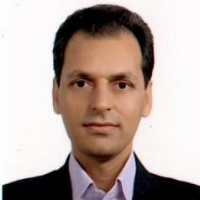Measuring public understanding of science and technology in Iran
Subjec:
Science and technology’s progress have opened new horizons for human being in a way that its effects have transformed the human lifestyle and given changed the globe. Undoubtedly, the spread of science in any society is related to the level of public understanding of science. For more than half a century, this index has been designed to measure public understanding of science in most developed countries and it is used in various surveys. The results of surveys show the positive effects of this index in improving the general public's understanding of science.
The purpose of this study is assessing and making localize the indicators of public understanding about science and technology in Iran. Considering the cultural and social differences of the societies, the indicators of public understanding of science were localized based on the cultural and social requirements of the country.
The research method in this study is descriptive and it is a survey. The people who study in this paper includes all men and women over 18 years who lived in Iran in 1400 and multi-stage cluster sampling method was used for selecting the samples. The data collection tool was a researcher-made questionnaire. With using the opinion of experts and their agreement coefficient, the content and face validity of the questionnaire were confirmed. Also measuring the construct validity second order confirmatory factor analysis was used. Cronbach's alpha coefficient was used for measuring the reliability of the prepared questionnaire and its items. This questionnaire examined the public understanding of society in five areas: 1. Public understanding of science; 2. Science and society; 3. Scientific literacy; 4. Trust in science 5. Media. Also, at the end, two open-ended questions were presented.
The findings show that most people emphasize the positive impact of science and technology. Also, most people participated in scientific programs, but in some activities, such as visiting scientific centers, going to the library, the participation rate is lower. Statements related to scientific literacy were approved by the majority. According to the dimensions of trust in science, the positive and negative opinions are significant. The variety of views about scientific media and other media is worthy of consideration. Trust in jobs can also be checked from very high to minimal. The results of examining two open-ended questions about the introduction of contemporary scientific figures and scientific centers emphasize the necessity of redefining related terms.
Indicators of public understanding of science and technology such as balance monitor the state of science and technology in society. But in Iran, this issue has been neglected, it is necessary for policy makers and planners to pay attention to this issue in order to achieve scientific development and to prioritize the implementation of periodic surveys to measure public understanding of science as a priority in their future plans.
-
Identifying Higher Education Internationalization Strategies in Upstream Documents
Mehdi Rahmani *,
Journal of Higher Education Letter, -
Levels and Indicators of Evaluation Research Impacts based on Evaluation Systems
Ghasem Azadi *
Journal of the Popularization of Science,



